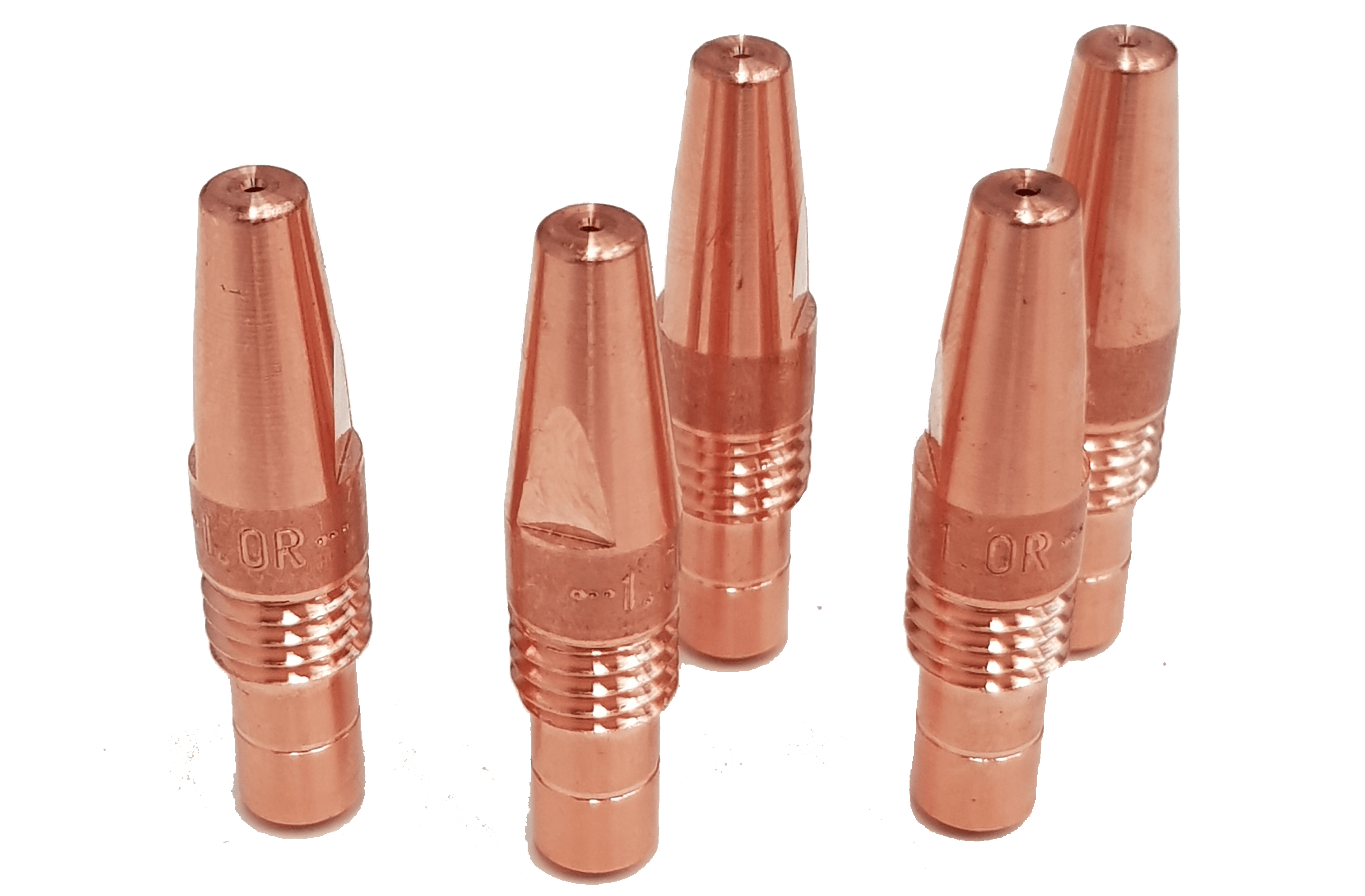Contact tips for MIG/MAG welding, a key element.

Contact tips are a key element for our welding torches to work perfectly and on a daily basis its importance is more and more disregarded.
We will unveil some myths and legends which manufacturers use to differentiate themselves from competition.
Contact tips are manufactured almost entirely out of copper with some alloys which are used to tweak the contact tips characteristics depending on the welding application. Contact tips are responsible for supplying all the electric power to the welding wire and provide arch stability, but the question is: what type of contact tip should I use in each case ?, here’s the answer:
These are the main types of contact tips in MIG / MAG welding:
- Electrolytic copper tips.
- Copper, chrome and zirconium alloy contact tips.
- Special tips for aluminum alloy wires.
- Bi-component contact tips.
- Contact tips with silver surfaces.
Electrolytic-copper contact tips
The commonly used contact tips for carbon steel wires are normally 99.9% electrolytic copper contact tips. These ones do not require any special care and usually work quite well up to 250A, but at higher working currents this type of copper overheats and suffers premature wear.
Copper alloy, chromium and zirconium contact tips
The steel-chromium-nickel alloys or what is the same the stainless steels: This type of steel has an average expansion that is increased by its low thermal conductivity and it will be more advisable to use copper contact tips alloyed with chrome and zirconium. These contact tips have more hardness than electrolytic copper ones and less thermal expansion which works out well on the sliding of these steels with little conductivity. They also have a lower wear at high temperatures which makes them very interesting for high current weldings and demanding systems. The main disadvantage of these contact tips is that they have a thermal conductivity around 20% less than copper for general use (Cu-ETP ) and they are less inexpensive.
Special contacts tips for aluminum-alloy wires.
Finally we will talk about the contact tips for aluminum welding. These contact tips are made out of electrolytic copper but due to the large aluminum expansion at low temperatures, the inner diameter of these contact tips is somewhat oversized so that the aluminum wire is not blocked when heated. They are usually marked with an A following the welding wire diameter. Nowadays, because of the poor quality of those contact tips coming from Asia, the contact tips’ inner diameters are greater and it is often possible to use a standard contact tip for aluminum application without welding effects, but it is not the best option because those diameters are not precise.
There is also the possibility of using contact tips of great length (greater than 40 mm), with good cooling it has been proven that this type of contact tips can work perfectly in aluminium welding applications without being specifically purpose-built. This is because both the contact tip and the aluminum welding wire are less-heated when working current flows and also expansions between them are lower.
Bi-component contact tips
However, there is a type of contact tips that use a bi-component, its exterior is copper 99.9% but its interior is a copper of greater hardness. This is done to maintain the contact tip electrical conductivity but also to give greater hardness to wire-feed wear. These contact tips have a higher price because its machining is more complex but they are highly advisable for robotic welding applications, where the lowering of stops make its price worthwhile.
Contact tips with silver surfaces
There are other contact tips types with silver coating and combinations of various materials that promise to last longer and be more efficient, but none of this under my criteria justifies the price increase, since coatings are barely a few microns thick. It is also known that silver hardness is very low, so that coating will be most-likely eliminated after short time due to the wire-feed, being its effectiveness null.
In conclusion, we must use the contacts tips that best suit our work. Do not forget that the goal of a production system is to be as efficient as possible and both counts, the duration of your contact tip and the cost of it.
José Carlos M.
Share this article!
Contact the author for more info!

